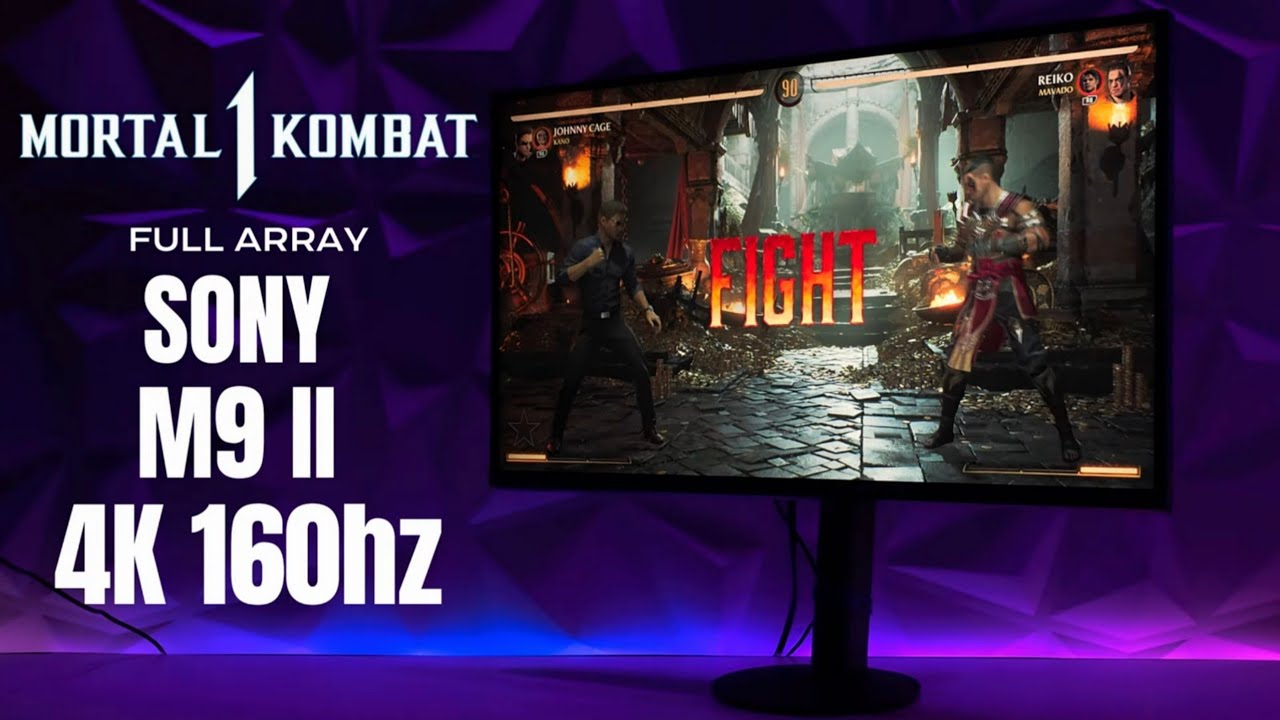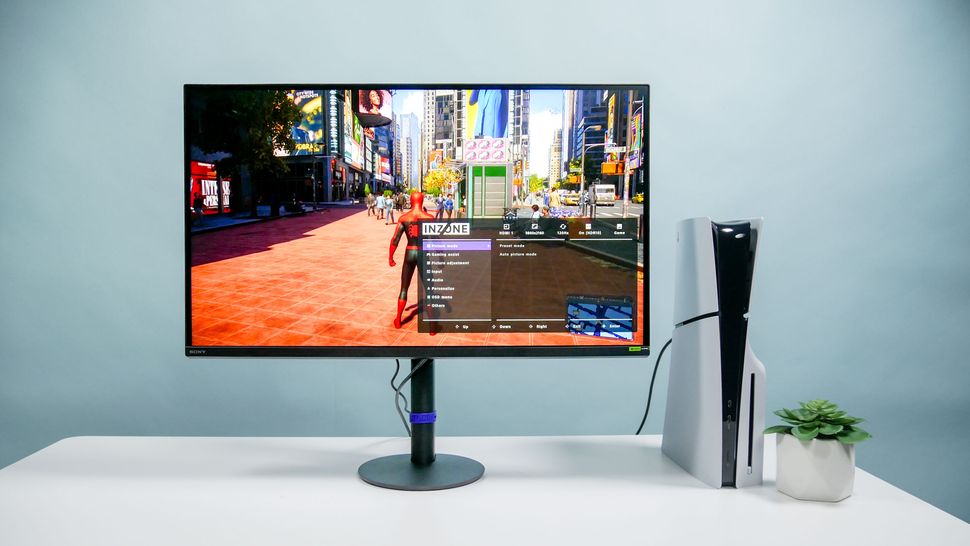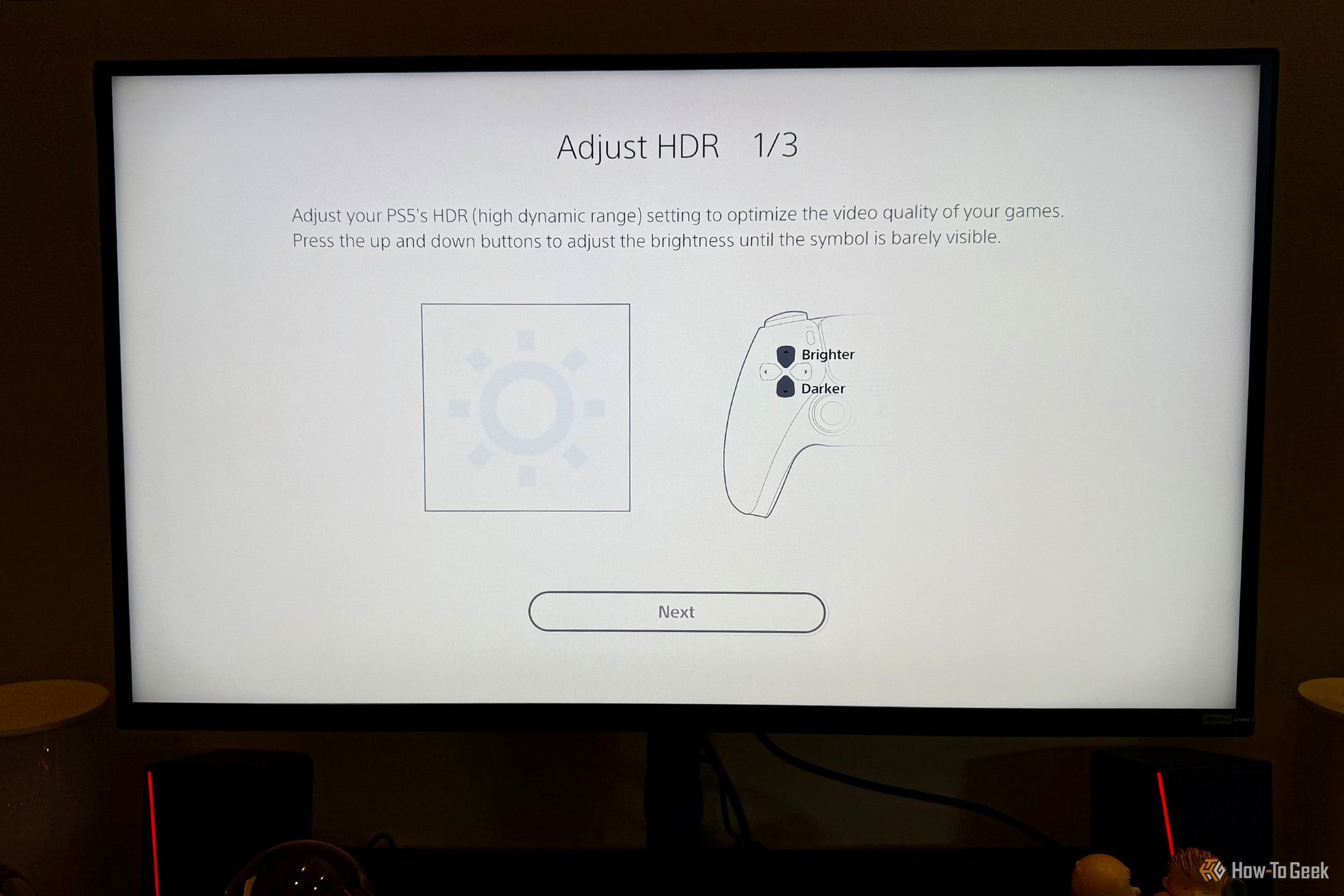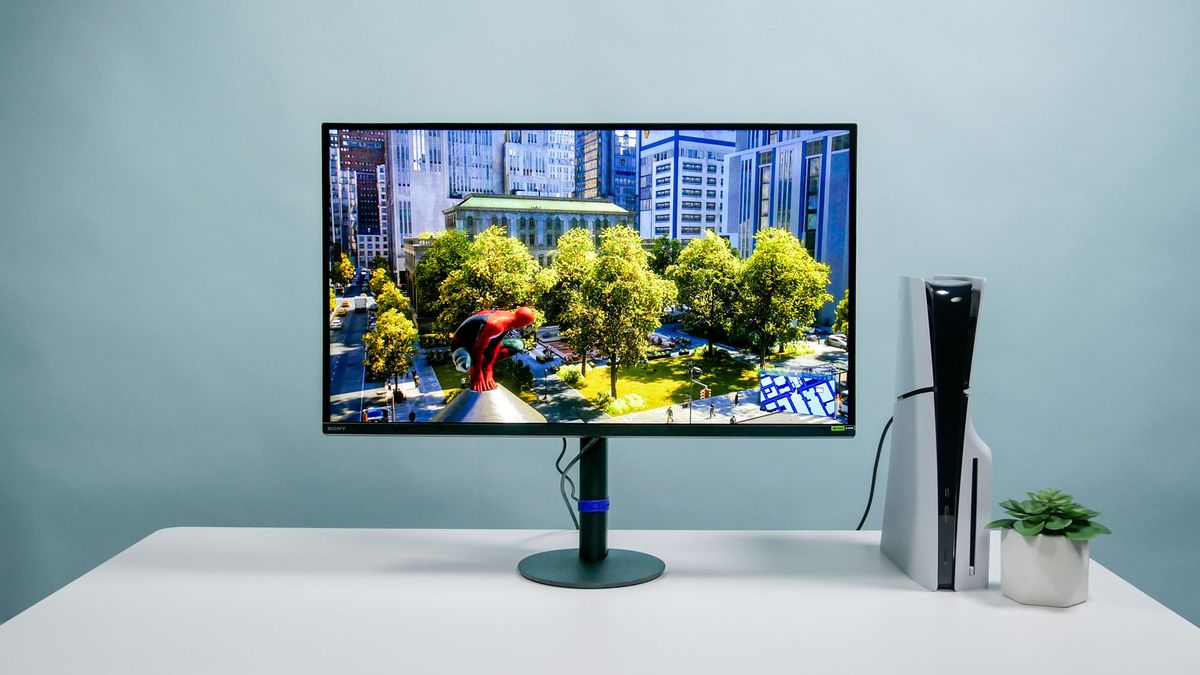With the arrival of the PS5 in 2020, Sony decided to enter the gaming monitor market. Two years later, in 2022, the Sony Inzone M9 was released, aiming to showcase that providing a 4K screen with HDR and NVIDIA G-SYNC technologies, along with a variable refresh rate of 144 Hz, was within the capabilities of the Japanese manufacturer. The first-generation Inzone M9 featured an original design and solid technical specifications, though it had some noted imperfections. Additionally, its high price point could be a deterrent for some enthusiasts. Two years later, Sony introduces the Inzone M9 II, designed to address these concerns. Is this a successful move?
MARK TWO
In terms of connectivity, the Inzone M9 II maintains the same alignment principle as its predecessor, divided into three sections. The right side (when facing the monitor) includes a 3.5mm jack, two USB-A ports (5 Gbit/s), and a USB-B port (5 Gbit/s). Centrally located are two HDMI 2.1 ports (for 4K 144Hz) and a DisplayPort 2.1 that supports 4K 160Hz. The third section features an additional USB-A port (5 Gbit/s) and the power adapter. A purple rubber strap on the monitor stand is provided to manage excess cables, though it may not be particularly aesthetically pleasing; Sony does offer this auxiliary solution nonetheless. Like its predecessor, the Inzone M9 II includes built-in speakers rated at 2 Watts, which produce weak sound quality and can give an impression of being muffled. Consequently, separate speakers, a soundbar, or a gaming headset will be necessary to enjoy optimal audio performance. This is one of the noted limitations of the Inzone M9 II; however, Sony considers it an additional audio option for user convenience. Among other features, the Inzone M9 II is specifically designed for PS5 compatibility, featuring automatic screen activation upon PS5 startup, automatic HDR settings adjustment, and content-based profile switching between games and movies.
OLED Who Cares?
Regarding the Inzone M9 II screen, Sony opted for an IPS LCD (In-Plane Switching) display, which remains a reasonable compromise given the higher cost of OLED technology. The Inzone M9 II performs well in terms of viewing angles and refresh rate, although it falls short when it comes to contrast ratio, particularly compared to OLED displays. However, with its maximum brightness capability reaching 750 nits under DisplayHDR 600 and up to 400 nits on SDR, the screen maintained good visibility even in bright daylight conditions within a sunlit room. This was largely due to HDR support, which provided better contrast and vivid color saturation, along with clear text display. Blacks were also sufficiently dark, minimizing any perceived disadvantage compared to OLED technology. The overall performance is influenced by ambient light levels, affecting game visuals as lighting intensity changes throughout the day. While I typically test games on my Sony 4K OLED A9 65-inch television, the viewing distance from my couch setup sometimes limits my ability to discern every detail in a video game. Conversely, when testing monitors like the Inzone M9 II up close, additional elements and details become apparent—this was evident during tests of Indiana Jones and the Ancient Circle, Dynasty Warriors Origins, and Kingdom Come Deliverance 2. Although this setup may reduce installation convenience slightly, it enhances visual immersion significantly.
MORE CONSOLE THAN PC?
To connect a PC to the Inzone M9 II, it is essential to update the firmware to access all the latest performance improvements. This process involves downloading the Inzone Hub software, which provides control over various display settings. These include customizing eco mode, adjusting text magnification, and configuring gamma and image format options (4:3 or 16/9), as well as selecting preconfigured modes such as gaming, cinema, and standard. Similar customization was available with the original Inzone M9, including mode selection like FPS mode, which adjusts brightness and contrast according to Sony’s specifications for better visibility of enemies in games. Additionally, there are typical image counter and reticle options.
BUY OR NOT?
Should we be tempted by the Sony Inzone M9 II? And who is it aimed at anyway? One thing is certain: it won’t suit everyone, likely due to its high price. At 999€, Sony has kept in line with the first model in an ultra-competitive market where similar performance and image quality can be found at a lower cost, especially from Samsung. The advantage of the Sony Inzone M9 II is that it was specifically built for the PS5, and with the upcoming PS5 Pro allowing games to run at higher resolutions and refresh rates, the monitor becomes an interesting option compared to TVs which would cost well over 1000€. Sony targets a gaming-savvy audience, equipped with all the performance needed for optimal gameplay. Features include 4K resolution, HDR technology, NVIDIA G-SYNC, higher frame rate, which is what the PS5 and its Pro counterpart currently offer. The monitor is calibrated “Perfect for PS5” to facilitate settings. Whether or not to buy depends on your budget, but know that in terms of performance, the Inzone M9 II is convincing, though its audio rendering needs improvement, its design has been refined, and most importantly, it’s very lightweight.
Have any thoughts?
Share your reaction or leave a quick response — we’d love to hear what you think!




